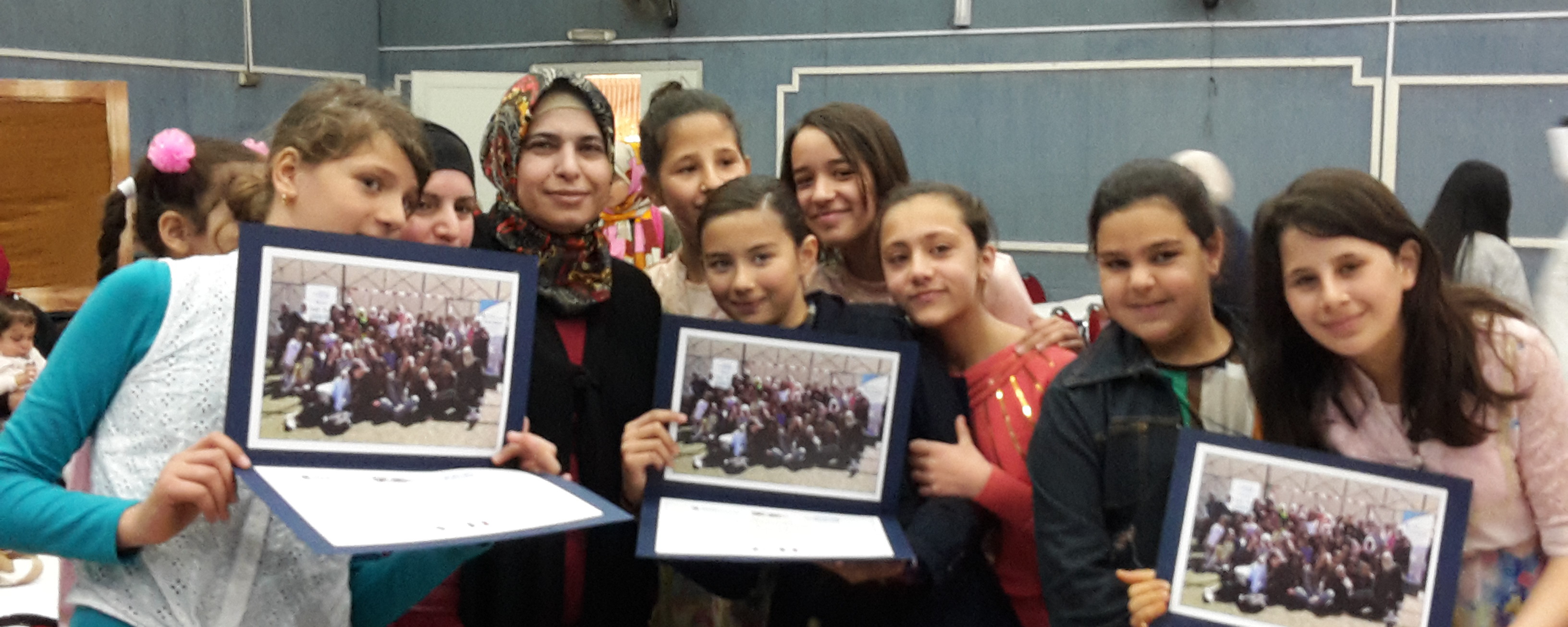Like mother, like daughter: two generations of women building a united society

Rawan and Samah have so much in common. They’re about the same age. They’re both loving, dedicated mothers. They live in the same city – Mafraq, in northern Jordan, just a short drive from the Syrian border. They share similar responsibilities, joys, and struggles in their daily lives. But one, crucial difference sets them a world apart.
Rawan is Jordanian; she has lived in Mafraq her entire life. Samah is Syrian; she and her family relocated in the city after fleeing the devastation and brutality of a ruthless civil war. Just like her, more than one million Syrian refugees found shelter in Jordan over the past six years. In today’s Jordan, the Syrian refugees struggle to integrate into society, while mistrust and rumors inform the way each group sees the other.
The daily routine of Syrians and Jordanians doesn’t offer many chances to break through the barrier of diffidence either. Rawan and Samah’s daughters know that all too well. Lana, Jordanian, goes to school in the morning, while Hanan attends classes during the afternoon with her Syrian peers. They frequent the same building, use the same equipment, hang out in the same spaces, but never see each other. In fact, most schools across Jordan have introduced double-shift schedules in order to guarantee access for all students, but in a way that keeps the two groups separated, preventing them from building the positive relationships and cohesion that Jordanian society needs.
Had it not been for our newly established Jordan team, Lana and Hanan wouldn’t have become best friends.
They met at our three-day sports camp, an initiative carried out in partnership with the Asian Football Development Project and the Jordanian Football Association as part of the project Empowering Girls and Building Social Cohesion through Sports and Physical Education, funded by UN Women. There, along with 88 more Syrian and Jordanian girls, they played soccer in mixed teams, learned nonviolent communication, and started bonding. At the end of the three days, when we tasked the students with designing their own activities to promote social cohesion, Lana and Hanan expressed their desire to be assigned to the same group.
In the following weeks, as they worked together on our assignment, they developed their friendship in the context of everyday life. That’s when their mothers, Rawan and Samah, first met.
The moms had to overcome even greater obstacles. Jordanian women often complain that Syrian women are “stealing their husbands,” fueling the already existing tensions between the refugees and the host community. The origin of this rumor goes back to the economic consequences of the refugee crisis. Possibly due to the economic burden on the displaced families, the dowry on Syrian women has significantly decreased. As a consequence, many Jordanian men married Syrian women as their second wives, in some cases without the permission of the first wife. The phenomenon generated negative stereotypes around Syrian women, especially in the eyes of local women, reinforcing intolerance and division.
As they accompanied their daughters to their meetings, Rawan and Samah warmed up to each other. They started talking, discovering that what they shared was much more than what divided them. Slowly but surely, they shed social tensions, overcame the stereotypes, and began to see each other as parents and friends.
Today, a month after the end of the project, Rawan and Samah visit each other regularly. Their friendship, along with the friendships between the girls that attended the soccer camps, is an example for the entire community. Together, the two mothers are showing the people of Mafraq that a society where Syrians and Jordanians live in harmony is possible.
There is still a lot of work to do, and relations between the two groups won’t change overnight. But it’s by sowing the seeds of mutual understanding and coexistence that the barriers keeping people apart will crumble. As we continue to work towards the goal of a united society, those barriers are showing the first, promising breaches.